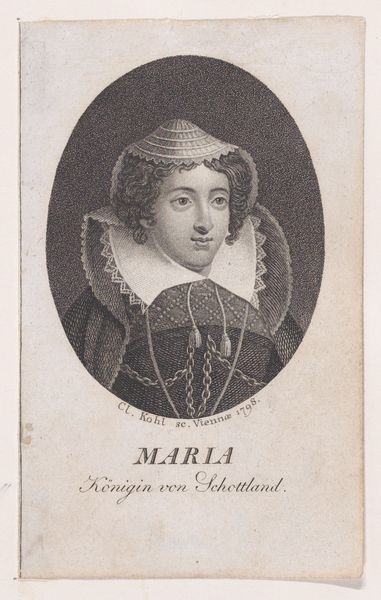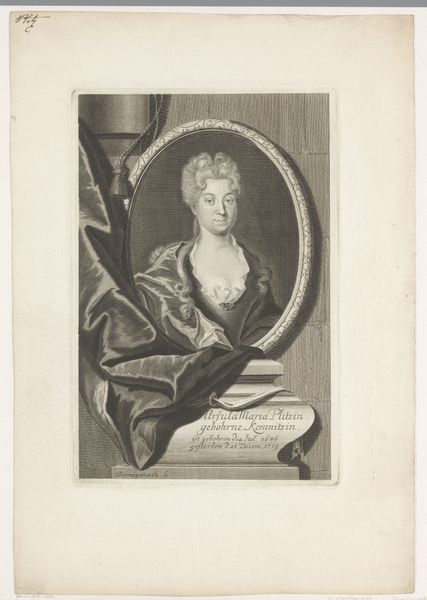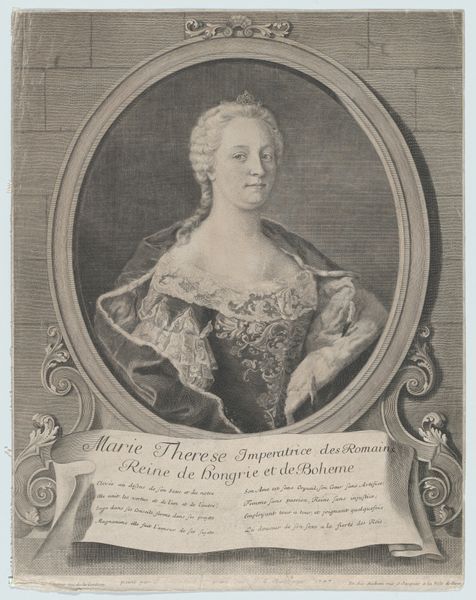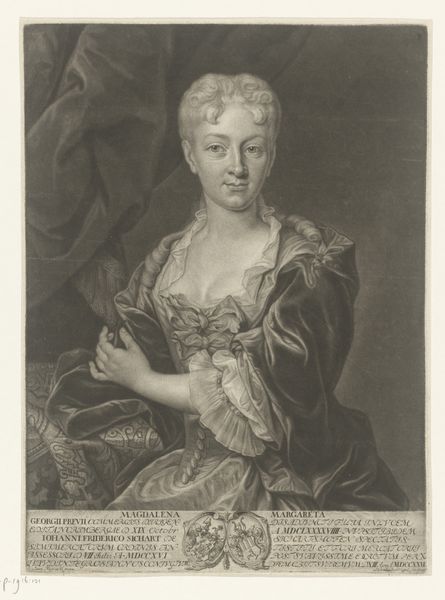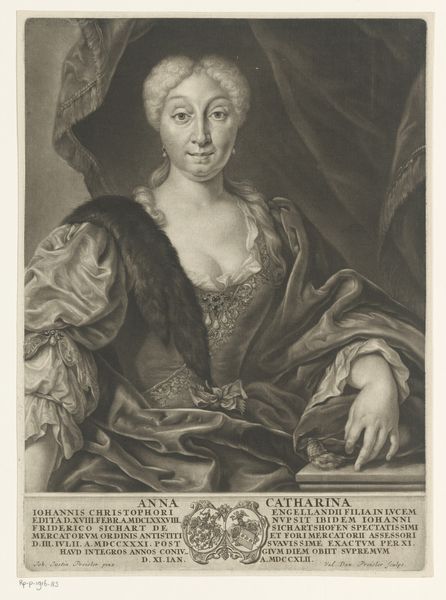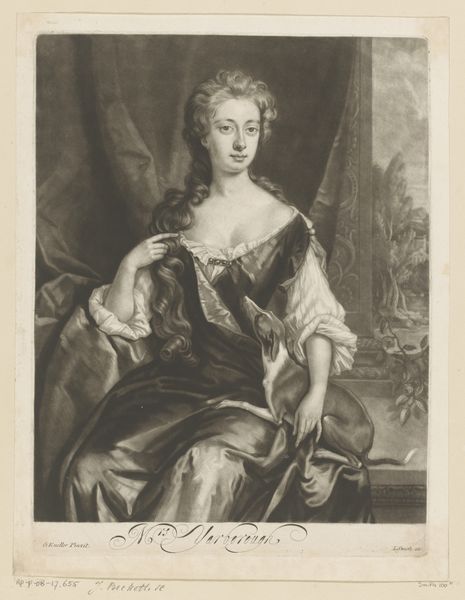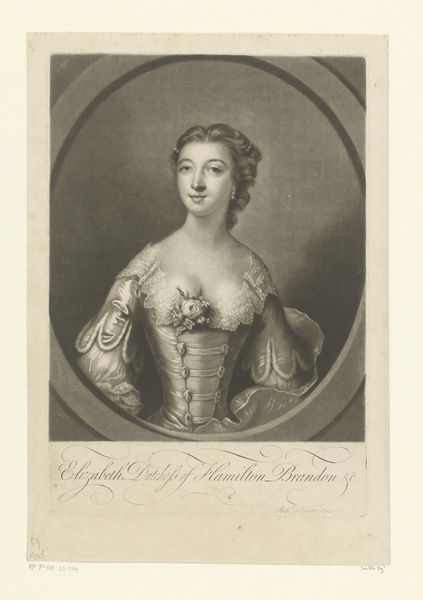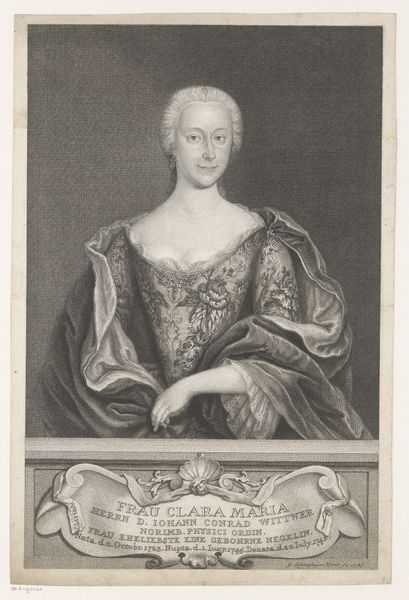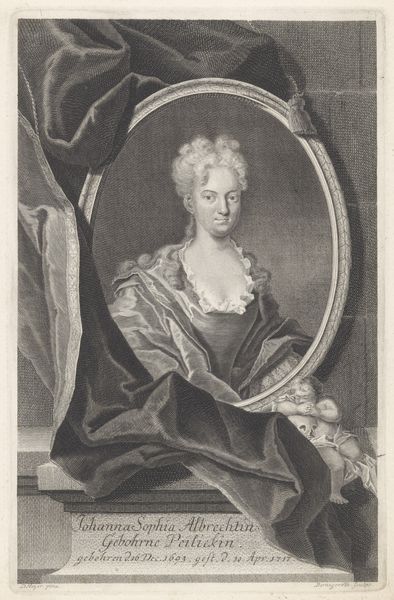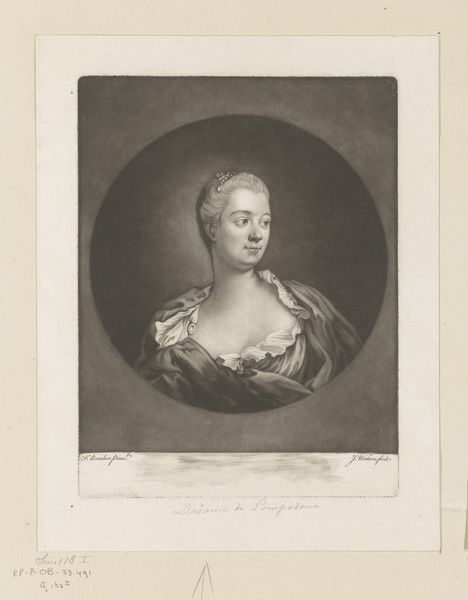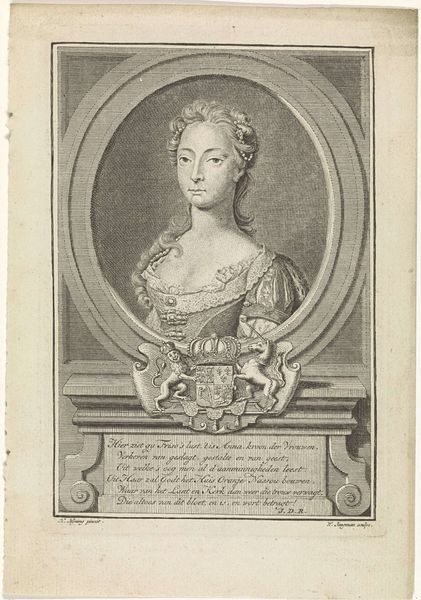
Dimensions: height 351 mm, width 245 mm
Copyright: Rijks Museum: Open Domain
Curator: Here we have a pencil drawing, seemingly from between 1740 and 1799. The artwork is titled "Portret van Maria Theresia, Rooms-Duits keizerin." Artist: Well, the first thing that strikes me is the weight of her gaze – like she's seen it all, and a good bit she probably didn't like. A regal melancholy hangs in those grey tones. Curator: Precisely. Considering the probable context of its making – likely produced for circulation amongst court circles – the seemingly humble materials present a curious dichotomy. We have a depiction of imperial power, yet it’s rendered not in oil paint, but in the accessible medium of pencil and what looks like maybe charcoal. This makes it less overtly propagandistic, more personal perhaps, even reproducible. Artist: Reproducible power! There's something wonderfully subversive about that thought, isn't there? Democratizing the divine right of kings, one sketch at a time. But look at the delicacy of the fur draped around her shoulders. Feels so tactile, like you could almost reach out and feel the softness against your skin. Curator: Yes, the artist shows an aptitude for texture with those materials. Also observe the lettering below the portrait: Maria Theresia, Queen of Hungary, etcetera. Its clear prominence further drives the intention and utilization of accessible materials. Artist: Etcetera! What a dismissal. All those titles, all that power, boiled down to 'etcetera'. Makes you wonder what the artist was really thinking, doesn’t it? Did they think that royalty, with all of its titles and airs, was inherently, in some way, a performance? Curator: A very interesting performance which influenced the very mode and methods of material making. But now what can we summarize from what we viewed? Artist: The ghost of empire, sketched in the dust of powdered wigs and political maneuvering. All caught in her eyes. Curator: A somber assessment from the artist. Now viewers, use this new materialist information and form your own conclusions from your historical insights!
Comments
No comments
Be the first to comment and join the conversation on the ultimate creative platform.
